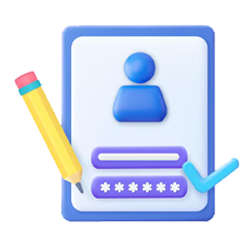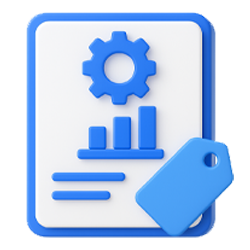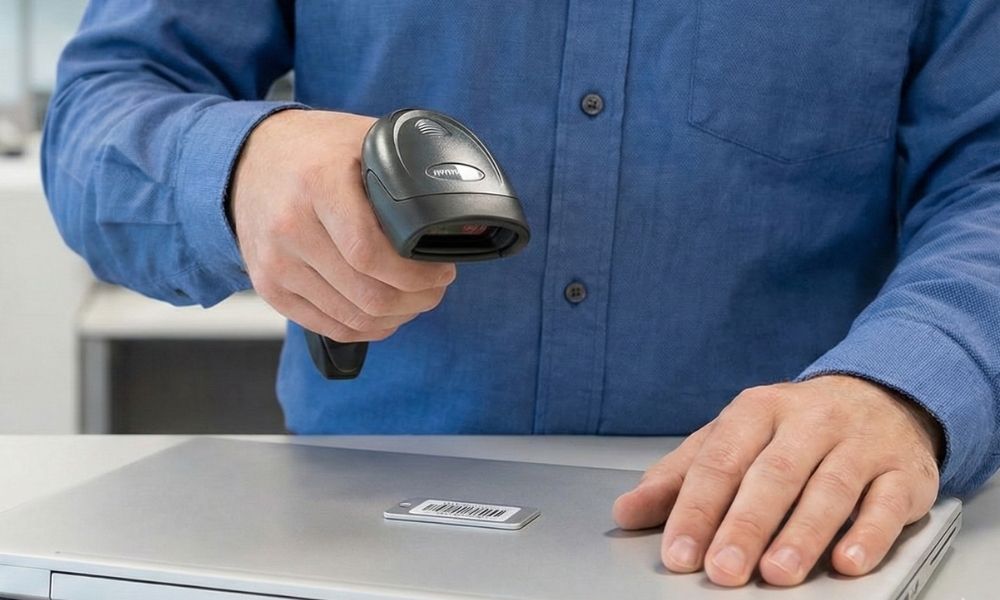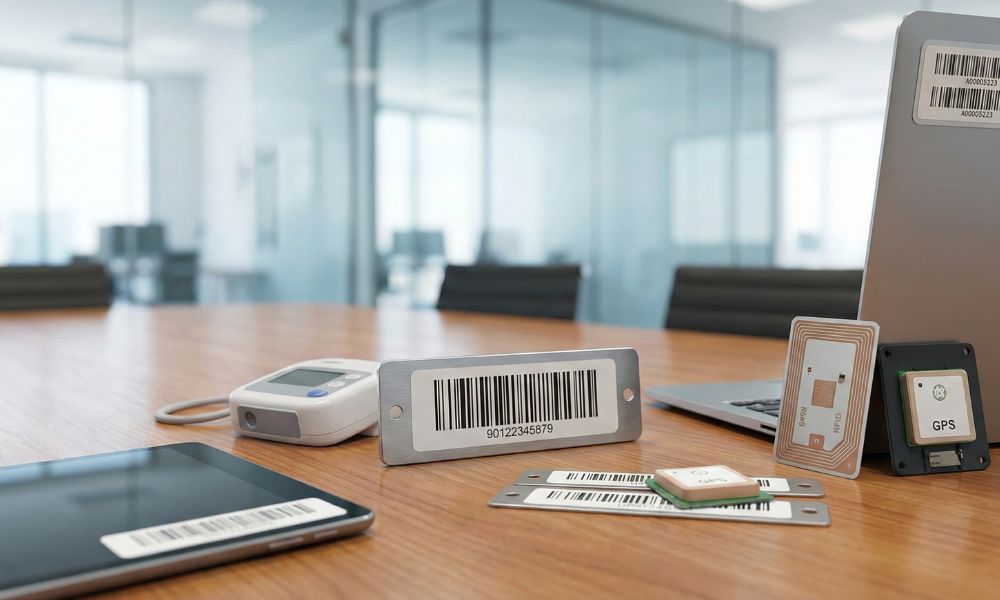Why IT Inventory Management Matters ?
IT Inventory Management (also called IT asset inventory management) is critical for cost control, security and compliance. It covers everything from desktops and laptops to servers and network hardware. Missing or outdated records create major risks. For example, studies show up to 30% of fixed assets are “ghost assets” – lost or disposed devices still counted on the books. Ghost assets inflate taxes and insurance and raise audit flags.
Lack of visibility hits the bottom line – About 60% of companies report financial losses from poor tracking. Accurate IT asset inventory helps IT teams, asset managers and finance teams stay aligned. It ensures audits pass and budgets stay on track.
This underscores the importance of implementing a reliable IT asset inventory management system. By providing end-to-end visibility into each asset’s lifecycle—from acquisition to disposal. It helps eliminate ghost assets, reduce financial risk, and ensure accurate reporting. With updated and accurate records, IT teams, asset managers, and finance departments can work in alignment. They can streamline audits and make more informed budgeting decisions.
Common Challenges in IT Asset Tracking
Keeping an accurate inventory is hard. Teams often face:
-
Fragmented Processes:
Relying on spreadsheets, email or siloed tools leads to errors and duplicate entries. One asset might be updated in HR’s list but never reconciled with Finance’s records.
-
Inventory Drift:
Equipment moves go unrecorded. A laptop loaned to staff or a server moved to another rack can “drift” from the system. Over time, these untracked changes accumulate. In fact, one report found 62% of businesses suffered financial impacts from inventory visibility failures.
-
Remote & Hybrid Work:
Distributed sites and mobile users make scanning every asset tough. BYOD devices or off-site equipment may never be logged, leaving blind spots.
-
Communication Gaps:
Poor alignment between IT, HR and Finance causes mismatches. For instance, HR may clear an employee leaving while IT never reclaims the hardware, and Finance still depreciates it.
-
Manual Workflows:
Email approvals, paper forms and manual data entry are slow and error-prone. A missing keystroke or typo can turn into a lost asset. One company found thier workers spent 47% of their time just searching for the “right tools” when assets weren’t tracked.
These challenges lead to lost assets, compliance fines and wasted money. Every unrecorded laptop or gadget is a compliance headache waiting to happen.
Best Practices for IT Hardware Inventory Management
Follow these practices to tighten control over your IT hardware inventory:
-
Consistent Asset Tagging:
Label every device with a barcode, QR code or RFID tag. Use a standard format (e.g. GS1 or internal coding) so tags are unique and scannable. This ensures each item—whether a computer, printer or router—is instantly identifiable.
-
Centralized Database:
Store all asset records in one system. Cloud-based platforms (like AssetCues) sync data in real time and integrate with your CMDB/ERP. This “single source of truth” means any change (even from remote scans) updates everyone’s view immediately.
-
Regular Audits:
Schedule cycle counts or physical inventories (quarterly or annually). Physically scan all tags and reconcile with the database and fixed asset register. Regular audits catch discrepancies early and support IFRS/GAAP compliance.
-
Defined Ownership:
Assign each asset to an owner or custodian. For example, IT tracks technical condition, Finance handles depreciation, and department managers approve transfers. Clear roles create accountability for every device.
-
Automate Data Capture:
Minimize manual entry. Use mobile scanning apps or RFID readers to auto-populate asset details. With automation, staff simply scan a tag with a smartphone, and the software logs the update. This cuts errors dramatically.
-
Lifecycle Workflows:
Track assets from purchase through retirement. Automate approval steps for check-in/check-out, assignments or disposals. For instance, scanning a retired server can trigger an automatic flag to update the asset register.
-
Documented Policies:
Write clear inventory procedures (e.g. “asset check-out rules” or “lost asset protocol”) and train staff. Consistent processes (and checklists) ensure everyone scans the same way.
“Maintaining an accurate asset inventory improves decision-making and saves money” notes one ITAM analyst. Companies that adopt these practices see far fewer lost items and smoother audits.
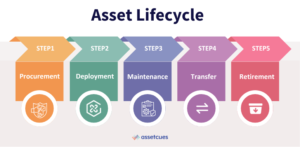
Technology & Tools for IT Asset Tracking
Today’s technology makes inventory management faster and smarter:
-
Mobile application for barcode/QR Scan:
Most IT devices can be tagged with barcodes or QR codes. Smartphone apps read these codes instantly. This low-cost tech lets IT crews audit thousands of items quickly.
-
RFID & IoT Tags:
For high-value or hard-to-access assets, use RFID tags (passive or active) or IoT sensors. These can automatically report location or condition (like temperature or motion). For example, data center servers can carry RFID tags so a reader quickly sweeps an entire rack.
-
Mobile Asset Apps:
Dedicated mobile apps (e.g. AssetCues Mobile) let staff scan and update assets on the go. They can capture photos, GPS or notes with each scan. A technician in the field can log every asset check without returning to a desk.
-
Cloud Platforms:
Cloud-based ITAM solutions offer 24/7 access from anywhere. They handle automatic updates and backups, and support distributed teams. This eliminates version conflicts and ensures all sites see the same inventory data in real time.
-
Integration:
Leading tools plug into your ITSM, procurement and accounting systems. For example, when a ‘helpdesk’ ticket references a laptop’s ID, it can auto-link to that asset record. Purchase orders or invoices can automatically create new assets in the inventory. These integrations cut manual re-keying and keep records in sync.
-
Analytics & Reporting:
Built-in dashboards show you usage trends, lifecycle costs and audit results. Analytics can highlight underused equipment or upcoming maintenance needs. Smart reports (e.g. “assets due for replacement”) turn raw data into actionable insights.
-
AI & Automation:
Next-gen systems use AI to spot anomalies. For instance, if an asset’s location changes unexpectedly, an AI engine can flag it as potential theft. Automated alerts can notify managers of compliance issues or pending audits.
For example, AssetCues offers a comprehensive IT inventory platform combining all these tools. It provides mobile scanning, cloud sync and rich analytics in one package, making on-the-fly asset updates effortless.
AssetCues: Automated IT Asset Tracking & Reconciliation
AssetCues is a turnkey solution for automated IT hardware tracking. It delivers real-time visibility and reconciles with your finance systems seamlessly.
Key features include:
-
Mobile Scanning App:
Instantly capture asset data using a smartphone or tablet. Scan barcodes, QR codes or RFID tags; the app auto-fills the asset record. Staff spend seconds on each item instead of minutes.
-
Automated Verification:
Perform continuous or on-demand inventory checks with zero manual entry. Just scan an area (e.g., a server rack), and AssetCues marks which assets are present or missing.
-
Asset Register Sync:
Each scan immediately updates your fixed asset register (ERP) in real time. For example, moving or retiring equipment (like a server) triggers an instant ledger update. This eliminates months of backlog reconciliation.
-
Lifecycle Workflows:
Streamline transfers, assignments and disposals. AssetCues enforces segregation of duties—an employee request, a manager’s approval, and the database update all happen in sequence automatically.
-
Dashboards & Analytics:
Finance and IT get clear dashboards. View inventory accuracy, audit results and audit trails at a glance. Usage analytics help plan upgrades and predict replacement cycles.
-
Audit Trails & Reporting:
Every asset transaction is logged with user, time and location. Comprehensive audit logs and easy reports (PDFs, Excel) keep auditors and managers happy.
-
Cloud & Security:
Manage multi-site inventories securely. AssetCues uses role-based access, encryption, and redundant cloud servers so data stays safe and available worldwide.
-
ERP and ITSM Integration:
AssetCues integrates with SAP, Oracle, and other enterprise systems. Any scan-based update flows automatically into accounting or asset registers. This means the finance team’s fixed asset register is always up-to-date with minimal effort.
Benefits: Organizations using AssetCues achieve near-100% inventory accuracy and slash audit time. Half of companies report saving over $1 million from ITAM improvements. Automation cuts mundane work (one report cites a 32% drop in inventory tasks), freeing IT and finance teams to focus on strategy. In practice, companies see faster audits, fewer write-offs, and lower costs from duplicate buys or lost equipment.
Integrating IT Inventory with Finance (Real-Time Reconciliation)
Syncing IT and financial systems is critical. Discrepancies between IT’s physical inventory and Finance’s fixed asset register can trigger audit failures or misstated books. Best practice is continuous reconciliation: whenever an asset is scanned (deployed, moved or retired), the system flags any differences and updates the register immediately.
AssetCues bridges the IT–Finance gap. Scans from the field flow instantly into your ERP or accounting system. For example, if a server is decommissioned, scanning that event removes it from the finance ledger in real time. This prevents the months of manual catch-up work that usually follows asset changes.
Industry experts note that aligning ITAM with accounting controls risk and streamlines audits. With real-time sync, companies have no surprises at audit time and can trust that “on paper” equals reality.
Emerging Trends in IT Asset Tracking & Inventory
The asset management landscape is evolving rapidly. Key trends to watch:
-
AI & Advanced Analytics:
Companies increasingly use AI to forecast asset needs and optimize lifecycles. Machine learning can predict maintenance events (e.g. hard drive failures) or suggest optimal replacement schedules, boosting uptime and ROI.
-
IoT & Smart Sensors:
More organizations add IoT sensors to IT equipment. For instance, data center hardware may include temperature or vibration sensors. This real-time condition data is tied back into the asset system for proactive alerts.
-
Blockchain & Security:
A few innovators experiment with blockchain to create tamper-proof audit trails for assets. While early, this could eventually assure regulators of uncompromised inventory logs.
-
Mobile & Remote Workforce:
The rise of remote work means tracking software must be mobile-friendly. Scanning apps and cloud access remain crucial as users move globally. BYOD (bring-your-own-device) policies also challenge ITAM, making tagging and enrollment workflows more important.
-
Sustainability & Circular Economy:
Environmental concerns are driving better disposal tracking. In 2022 the world generated a record 62 million tons of e-waste, yet only ~22.3% was properly recycled (Source – unitar.org). Companies are responding by reusing hardware longer and recycling devices responsibly. Detailed inventory and disposal logs (like those in AssetCues) support recycling reports and waste reduction goals.
According to market analysis, the global asset tracking market is booming. Valued at about $23.4 billion in 2024, it’s projected to reach $59.6 billion by 2032 as more firms adopt tracking technology (Source – fortunebusinessinsights.com). This reflects how asset management has become a strategic priority.
![]()
Implementing an IT Hardware Inventory Tracking Program
Rolling out an inventory program is a step-by-step process. Here’s a roadmap:
-
Baseline Audit:
First, capture existing asset data. Do a full scan or sample of your hardware. Identify untagged items. This audit builds the foundation of your inventory and highlights gaps.
-
Tagging Initiative:
Label every device found (especially those missing tags) with a barcode/RFID. Now every item can be scanned.
-
Deploy Software:
Choose and install your tracking platform (e.g. AssetCues). Import the baseline data. Configure asset types, fields and workflows (check-out, assignments, retirements). Verify the mobile app works at all sites.
-
Integrate Systems:
Link the tracking tool to your other systems. For example, sync the asset database with the helpdesk, procurement and finance. Import purchase orders so new assets are created automatically, and enable API links so scans update the ERP register.
-
Training & Rollout:
Train IT staff and asset custodians on scanning procedures. Use quick guides or short sessions. Emphasize consistent data entry and what actions (transfers, losses, etc.) must be logged.
-
Ongoing Process:
Schedule regular counts (e.g. quarterly or continuous scans) to keep data fresh. Assign departmental owners to verify accuracy. For instance, a Site Administrator checks that local records match scans.
-
Roles & Responsibilities:
Define who in IT, Operations and Finance does what. IT handles scanning and tagging, Operations manages physical custody, Finance reconciles and reports. Clear ownership ensures accountability.
A simple rollout timeline might be:
- Q1: Perform audit and tagging blitz.
- Q2: Go live with AssetCues (core setup and initial scans).
- Q3: Integrate with ERP / helpdesk and refine processes.
- Q4: Achieve steady state with ongoing cycles and full compliance.
Benefits & ROI of Effective IT Inventory Management
Investing in inventory tracking pays off in tangible ways:
-
Cost Savings:
You avoid unnecessary purchases and losses. Companies often save six or seven figures by stopping redundant buys and catching missing assets. For example, automated tracking can lead to substantial annual savings by eliminating duplicates and preventing theft.
-
Efficiency:
With scanning and automation, staff spend far less time on manual data entry. Workloads drop significantly (one report showed ITAM tasks fell by ~32% with automation). This lets your team focus on strategy, not spreadsheets.
-
Compliance & Audit Readiness:
Accurate records mean audits go smoothly. You won’t be writing off assets each year because they’re unaccounted for. The finance team can close the books faster, confident in the data.
-
Accuracy:
Inventory accuracy leaps from ~60% with manual methods to over 90% with automated scans. When every scan updates the record immediately, your database mirrors reality.
-
Soft Benefits:
Better planning and security. You can forecast refresh budgets (knowing exactly which devices are old) and onboard employees faster (assign equipment without hunt). Asset tracking also boosts IT security – lost laptops are logged and can be encrypted or wiped promptly.
-
Real-World Impact:
A large organization found that real-time tracking cut its audit cycle by 50% and virtually eliminated manual reconciliation. Asset discrepancies (and related write-offs) dropped to near zero.
Conclusion
Strong IT and computer hardware inventory management is no longer optional. It underpins cost control, security and operational efficiency. With AssetCues, your organization gains automated, real-time visibility into every device, and keeps the finance register in sync with minimal effort.
Frequently Asked Questions (FAQ)
Q. What is IT Inventory Management ?
Ans: IT inventory management—is the process of tracking and maintaining accurate records of all IT assets within an organization. This includes hardware like laptops, desktops, servers, network equipment, and mobile devices.
Q. How to Do an IT Inventory?
Ans: To do an IT inventory, start by scanning and tagging all hardware assets accurately. Apply barcodes, QR codes, or RFID tags to uniquely identify each asset. Use a cloud-based system like AssetCues to store and sync asset data in real time.
Then, integrate the system with ERP and helpdesk tools for automatic updates and reconciliation. Train IT staff and custodians on proper scanning and tracking procedures. Conduct regular audits or enable continuous scans to catch discrepancies early and improve accuracy.
Q: What features should I look for in IT asset tracking software?
Ans: A robust system should offer mobile scanning (barcode/RFID support), cloud syncing, and role-based access. It should integrate with your ERP/ITSM (so asset changes flow automatically) and include good reporting/dashboards. Look for automation features (alerts for missing items) and easy data import/export.
Q: How do I track computer hardware inventory across multiple sites?
Ans: Use a centralized, cloud-based system. Tag all assets at each location. Staff scan devices locally, and the data syncs to the cloud. Everyone (head office and remote sites) sees the same up-to-date database. AssetCues, for example, lets you set up multiple locations in one system, so any site scan instantly updates the main inventory.
Q: How does real-time reconciliation of IT inventory work?
Ans: With the right setup, each asset scan can trigger an instant ERP update. For instance, if IT scans a retired asset, an API link can remove it from the fixed asset ledger immediately. There’s no lag – the register reflects the scan. This requires integration, but pays off by eliminating monthly catch-up work.
Q: Can I use AssetCues for unusual assets (e.g. BYOD or rack servers)?
Ans: Yes. AssetCues is flexible about asset type. You can tag and track any hardware – from employee laptops and phones to serial-numbered rack servers. BYOD items can be enrolled by tagging company-owned accessories. The system handles any unique ID you attach.
Q: How often should we audit IT assets?
Ans: Combine continuous scanning with periodic counts. Experts often recommend quick spot-checks (e.g. using mobile app to scan random samples) along with cycle counts quarterly or semiannually. With AssetCues, you can also set up automatic regular scans (for example, scanning all tagged items in a room every month).
Q: What are the benefits of automated IT hardware inventory tracking?
Ans: Automated tracking dramatically cuts losses and saves staff time. You get immediate visibility into your assets, so misplaced devices don’t slip through. It also boosts compliance – you’re always ready for audits. Overall, it frees your team from tedious data tasks, enabling proactive management and cost savings.
Q: Are there free tools for IT asset inventory?
Ans: Basic methods exist (spreadsheets, open-source tools), but they have limits. Spreadsheets lack real-time updates and collaboration. Open-source may be free but often needs extensive IT effort to maintain. In practice, the hidden costs (manual labor, errors, audit risks) usually outweigh the savings. Investing in a solution like AssetCues delivers far better accuracy and ROI over time.



